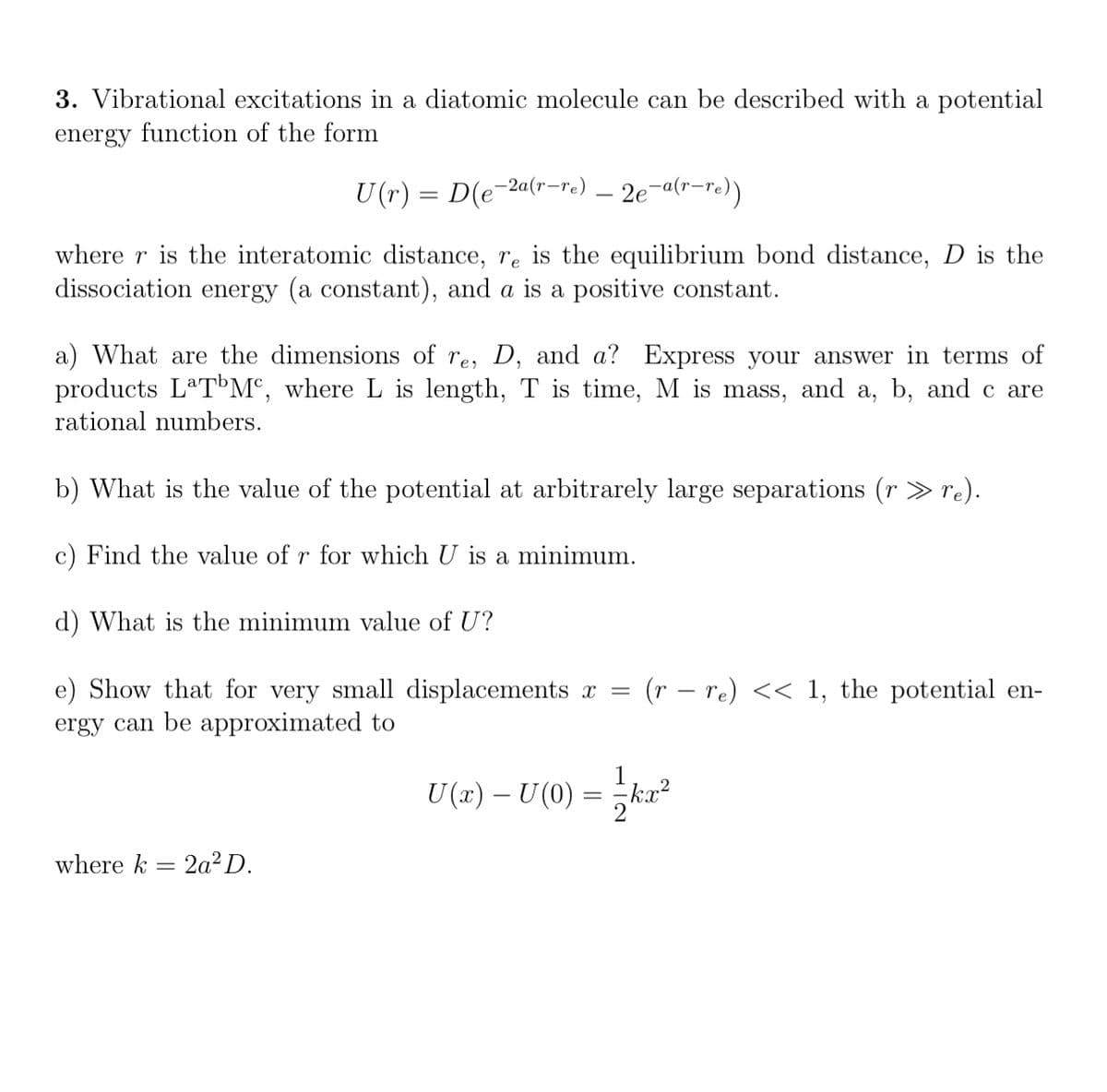3. Vibrational excitations in a diatomic molecule can be described with a potential energy function of the form U (r) = D(e-2a(r-re) – 2e¬a(r=rc)) where r is the interatomic distance, re is the equilibrium bond distance, D is the dissociation energy (a constant), and a is a positive constant. a) What are the dimensions of re, D, and a? Express your answer in terms of products LaTbM°, where L is length, T is time, M is mass, and a, b, and c are rational numbers. b) What is the value of the potential at arbitrarely large separations (r > re). c) Find the value of r for which U is a minimum. d) What is the minimum value of U? (r – re) << 1, the potential en- e) Show that for very small displacements x = ergy can be approximated to 1 U (x) – U (0) kx? where k = 20²D.
3. Vibrational excitations in a diatomic molecule can be described with a potential energy function of the form U (r) = D(e-2a(r-re) – 2e¬a(r=rc)) where r is the interatomic distance, re is the equilibrium bond distance, D is the dissociation energy (a constant), and a is a positive constant. a) What are the dimensions of re, D, and a? Express your answer in terms of products LaTbM°, where L is length, T is time, M is mass, and a, b, and c are rational numbers. b) What is the value of the potential at arbitrarely large separations (r > re). c) Find the value of r for which U is a minimum. d) What is the minimum value of U? (r – re) << 1, the potential en- e) Show that for very small displacements x = ergy can be approximated to 1 U (x) – U (0) kx? where k = 20²D.
Related questions
Question
Please answer e step by step

Transcribed Image Text:3. Vibrational excitations in a diatomic molecule can be described with a potential
energy function of the form
U (r) = D(e-2a(r-re) – 2e¬a(r=rc))
where r is the interatomic distance, re is the equilibrium bond distance, D is the
dissociation energy (a constant), and a is a positive constant.
a) What are the dimensions of re, D, and a? Express your answer in terms of
products LªTM°, where L is length, T is time, M is mass, and a, b, and c are
rational numbers.
b) What is the value of the potential at arbitrarely large separations (r > re).
c) Find the value of r for which U is a minimum.
d) What is the minimum value of U?
e) Show that for very small displacements x
ergy can be approximated to
(r – re) << 1, the potential en-
1
U (x) – U (0)
ka?
where k = 2a² D.
Expert Solution
This question has been solved!
Explore an expertly crafted, step-by-step solution for a thorough understanding of key concepts.
This is a popular solution!
Trending now
This is a popular solution!
Step by step
Solved in 2 steps with 2 images
